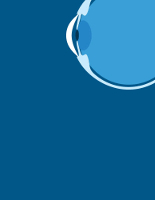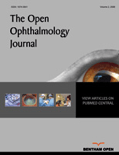
VISION RESEARCH
Scope & Guideline
Pioneering research in visual perception.
Introduction
Aims and Scopes
- Visual Perception and Psychophysics:
The journal primarily focuses on research related to visual perception, exploring the mechanisms and processes involved in how humans and animals perceive visual stimuli. This includes studies on color perception, motion detection, spatial awareness, and visual attention. - Neuroscience of Vision:
A significant portion of the journal's articles delve into the neural underpinnings of visual processing, examining the roles of various brain regions, neural circuits, and the impact of factors such as age and neurological disorders on vision. - Clinical Vision Research:
VISION RESEARCH features studies that address clinical aspects of vision, including the effects of eye diseases, the development of therapeutic interventions, and the implications of visual impairments on daily functioning. - Computational Modeling:
The journal encourages innovative computational approaches to understanding visual processes, including modeling visual perception and simulating neural responses to visual stimuli. - Experimental Techniques in Vision Science:
Research methods such as psychophysical experiments, neuroimaging, and advanced optical techniques are frequently employed to investigate various aspects of vision, providing insights into both basic and applied vision science.
Trending and Emerging
- Impact of Visual Disorders on Daily Life:
There is an increasing focus on how visual impairments affect daily activities and quality of life, emphasizing the need for research that bridges clinical findings with practical implications in rehabilitation and assistive technologies. - Neuroplasticity and Vision Rehabilitation:
Research exploring neuroplasticity in the context of vision rehabilitation is gaining momentum, particularly studies that investigate how visual training and therapeutic interventions can enhance visual processing in individuals with impairments. - Integration of Multisensory Information:
Emerging research is highlighting the integration of visual information with other sensory modalities, such as auditory and haptic inputs, to understand how these interactions influence perception and behavior. - Use of Advanced Imaging Techniques:
The application of advanced neuroimaging techniques and optogenetics in studying visual processing is on the rise, allowing for a more detailed understanding of the neural mechanisms underlying visual perception. - Artificial Intelligence and Vision Science:
There is a burgeoning interest in the intersection of artificial intelligence and vision science, particularly in how computational models can enhance our understanding of visual perception and inform the development of vision-related technologies.
Declining or Waning
- Traditional Visual Acuity Testing:
Research focusing solely on traditional methods of assessing visual acuity appears to be waning, as newer, more integrative approaches that consider a wider range of visual functions and contextual factors are gaining traction. - Static Visual Stimuli in Isolation:
Studies that rely heavily on static visual stimuli without considering dynamic interactions or real-world contexts are becoming less common, as there is a growing emphasis on more ecologically valid experimental designs. - Basic Color Theory without Application:
While color perception remains a core area, there is a noticeable decline in studies that simply explore basic color theory without tying findings to practical applications, such as in clinical settings or technology development.
Similar Journals

Annual Review of Vision Science
Catalyzing Discoveries in Visual HealthThe Annual Review of Vision Science is an esteemed journal published by ANNUAL REVIEWS, focused on advancing the field of vision science through comprehensive reviews that synthesize current research and emerging trends. With an ISSN of 2374-4642 and E-ISSN 2374-4650, this journal has established itself as a leading source of high-quality academic content, boasting a prestigious Q1 ranking in the fields of Medicine (miscellaneous), Neurology (clinical), and Ophthalmology as of 2023. Its impressive Scopus rankings further attest to its influence, placing it in the top 5 within ophthalmology (96th percentile) and 31st in clinical neurology (92nd percentile). The journal aims to serve researchers, clinicians, and students alike by providing critical insights into vision science, thereby enhancing understanding and fostering innovation in both basic and applied research. Although not open access, the Annual Review of Vision Science remains a vital resource for those engaged in the study and application of vision science worldwide.

Clinical Optometry
Illuminating Pathways in Ophthalmologic Research.Clinical Optometry is a prominent open-access journal published by DOVE MEDICAL PRESS LTD, dedicated to advancing the field of ophthalmology and sensory systems. Established in 2010, this journal provides a platform for impactful research and insights that facilitate the understanding and treatment of visual disorders. With an impressive Scopus ranking of #58 in Ophthalmology and #28 in Neuroscience & Sensory Systems, Clinical Optometry is recognized for its contributions to the academic community, correlating with a Q3 classification in Ophthalmology and Q4 in Sensory Systems as of 2023. Based in New Zealand, this journal encourages researchers, professionals, and students to disseminate their findings, fostering a culture of knowledge sharing and collaboration in the field. For those interested in cutting-edge research, Clinical Optometry serves as an essential resource, offering a comprehensive collection of articles that enhance the understanding of ophthalmologic science.

Eye and Vision
Connecting global minds in the pursuit of vision advancements.Eye and Vision, published by BMC, is a leading open-access journal dedicated to the dynamic field of ophthalmology and visual sciences. With its ISSN 2326-0246 and E-ISSN 2326-0254, the journal has established itself as a premier platform for innovative research and clinical studies, achieving impressive rankings in 2023 as Q1 in both Health Professions (Miscellaneous) and Ophthalmology categories. The journal's commitment to accessible knowledge since its transition to open access in 2015 enhances its global reach, allowing researchers, clinicians, and students to share and access top-tier studies and advancements in the field. Located in the United Kingdom and delivering influential insights from 2014 through to 2024, Eye and Vision holds significant relevance, with a Scopus ranking placing it in the 99th percentile for Health Professions and the 93rd percentile for Ophthalmology, making it an essential resource for those looking to stay at the forefront of eye research and vision science.

VISUAL COGNITION
Exploring the Depths of Visual PerceptionVISUAL COGNITION, published by Routledge Journals, Taylor & Francis Ltd, is a leading academic journal dedicated to the nuanced understanding of visual processing and cognition. Since its inception in 1994, the journal has become a pivotal resource for researchers and practitioners in fields including Cognitive Neuroscience and Psychology, having achieved a distinguished Q1 ranking in Arts and Humanities and impressive standings among its peers in experimental and cognitive psychology. With an impact factor reflecting its scholarly significance, VISUAL COGNITION serves as a forum for high-quality research articles that shed light on the cognitive aspects of visual perception. Although it operates under a subscription model, the journal remains committed to disseminating knowledge that inspires both established and emerging scholars alike. For those interested in the latest advancements in visual cognition, this journal promises a wealth of insights and rigorous scholarly dialogue.

Art & Perception
Unveiling the Psychology Behind Artistic ExperienceArt & Perception, published by BRILL, stands as a pivotal journal in the exploration of visual arts and the psychology of perception. With a robust ISSN of 2213-4905 and E-ISSN of 2213-4913, this journal has established itself as an indispensable resource for researchers, professionals, and students in the fields of Applied Psychology, History, and Visual Arts. As of 2023, it enjoys impressive rankings in its categories, with a Q3 status in Applied Psychology and a Q1 status in both History and Visual Arts, reflecting its scholarly impact. The journal operates from its base in Leiden, Netherlands, and spans an impressive coverage from 2013 to 2024. While it does not currently offer open access, its commitment to disseminating valuable research makes it an essential read for those seeking to deepen their understanding of art perception and its psychological underpinnings. With a Scopus rank of #39 out of 667 in Arts and Humanities, and a remarkable 94th percentile, Art & Perception continues to shape discourse and innovation at the intersection of art and psychology.

Journal of Ophthalmic & Vision Research
Connecting Scholars in Ophthalmic ExcellenceThe Journal of Ophthalmic & Vision Research, published by KNOWLEDGE E, stands as a crucial platform for disseminating high-quality research in the field of ophthalmology. With an ISSN of 2008-2010 and an E-ISSN of 2008-322X, this journal fosters open access to valuable insights since 2010, enhancing visibility and reach for researchers globally. Based in Dubai, UAE, it has established a reputation for excellence, reflected in its Q2 ranking in Ophthalmology for 2023 and its position among the top 65th percentile in Scopus. Covering a broad spectrum of topics within ophthalmic science, the journal serves as a vital resource for professionals, researchers, and students by presenting original research, reviews, and case studies that drive innovation and collaboration within the community. As the journal continues to contribute to advancements in eye care and vision sciences, it invites scholars to explore, engage, and publish within its pages, thus enriching the global discourse on ophthalmic health.

JOURNAL OF VISUAL COMMUNICATION AND IMAGE REPRESENTATION
Transforming Ideas into Visual NarrativesJOURNAL OF VISUAL COMMUNICATION AND IMAGE REPRESENTATION, published by Academic Press Inc Elsevier Science, is an influential platform dedicated to the realms of visual communication, media technology, and advanced image representation. With a strong focus on interdisciplinary approaches, this journal aims to foster the exchange of innovative ideas among researchers and professionals in the fields of computer vision, image processing, and signal processing. Recognized for its significance, it boasts an impressive impact factor within its category quartiles; notably, it ranks Q2 in Computer Vision and Pattern Recognition and Electrical and Electronic Engineering, while achieving Q1 in Media Technology. Based in the United States, the journal not only provides valuable insights into the latest developments from 1990 to 2024 but also encourages cutting-edge research that enhances multimedia systems and user interactions. As a vital resource for students, researchers, and industry professionals alike, the journal ensures a robust understanding of visual information processing, critical for navigating today's digital landscape.

African Vision and Eye Health Journal
Connecting knowledge to practice in eye health.African Vision and Eye Health Journal is an esteemed publication dedicated to advancing the fields of ophthalmology, optometry, and public health across the African continent. Published by AOSIS, this journal serves as a vital platform for disseminating research, clinical practices, and educational advancements aimed at improving eye health and vision care. As an Open Access journal, it ensures that knowledge is freely accessible to researchers, healthcare professionals, and practitioners, fostering collaboration and innovation. With its ISSN 0378-9411 and E-ISSN 2410-3039, the journal is committed to enhancing the understanding of vision-related issues affecting diverse populations, making it an invaluable resource for those dedicated to the promotion of eye health in Africa. By providing cutting-edge research and insights, the African Vision and Eye Health Journal plays a critical role in addressing the challenges of eye health and is a key resource for anyone committed to making a difference in this essential field.

Open Ophthalmology Journal
Illuminating the path to better vision through research.The Open Ophthalmology Journal, published by Bentham Science Publishers Ltd, is a vital resource in the field of ophthalmology, dedicated to advancing knowledge through open-access research. With an ISSN of 1874-3641, it offers a platform for the dissemination of innovative studies from 2011 to 2024, focusing on the latest developments in eye care and vision science. Despite being categorized in the lower quartile (Q4) according to the 2023 rankings, and holding a position in the Scopus Ricks at 113 out of 137 in the ophthalmology domain, the journal serves as a valuable outlet for emerging scholars and seasoned researchers alike to share their findings. The journal's commitment to accessibility ensures that its content is available to a broad audience, promoting collaboration and knowledge exchange. Located in the Netherlands, The Open Ophthalmology Journal aspires to become a cornerstone for those passionate about understanding and improving ocular health through rigorous scientific inquiry.

Computational Visual Media
Connecting global minds in computational visual media.Computational Visual Media, published by TSINGHUA UNIVERSITY PRESS, is a premier open access journal dedicated to advancing the fields of Artificial Intelligence, Computer Graphics and Computer-Aided Design, and Computer Vision and Pattern Recognition. Since its inception in 2015, it has established a robust position within the academic community, consistently achieving Q1 rankings across its categories as of 2023. With exceptional Scopus rankings, including a remarkable percentile standing in the top 10% globally, the journal serves as a vital resource for researchers, professionals, and students eager to explore cutting-edge methodologies and technologies in computational visual media. The journal’s open access format enhances accessibility, fostering global collaboration and dissemination of knowledge, making it an indispensable platform for those at the forefront of innovation in these dynamic fields. The journal is headquartered in Beijing, China, and aims to publish high-quality research that not only contributes to theoretical advancements but also addresses practical challenges within computational visual technologies.